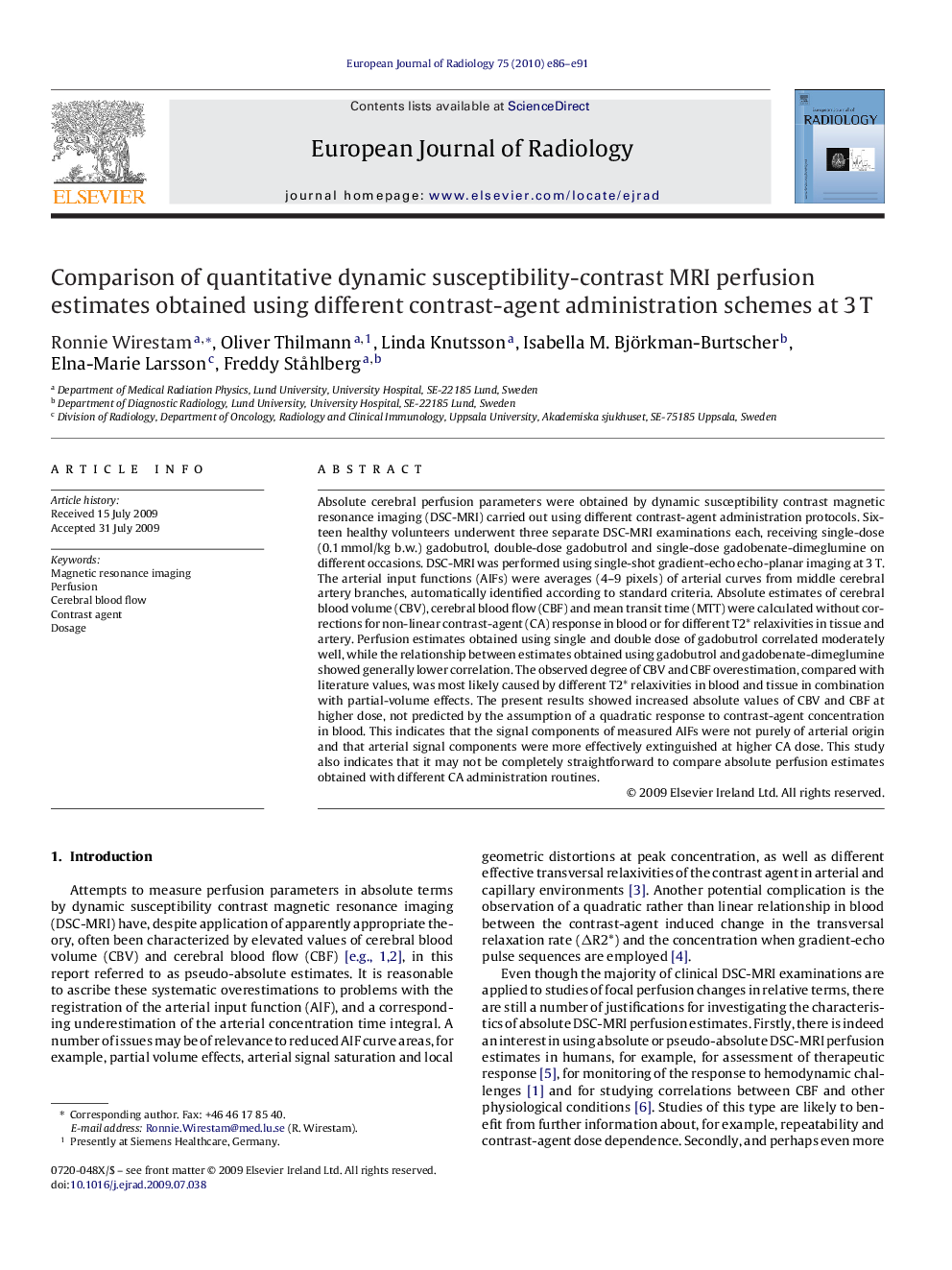| Article ID | Journal | Published Year | Pages | File Type |
|---|---|---|---|---|
| 4227167 | European Journal of Radiology | 2010 | 6 Pages |
Absolute cerebral perfusion parameters were obtained by dynamic susceptibility contrast magnetic resonance imaging (DSC-MRI) carried out using different contrast-agent administration protocols. Sixteen healthy volunteers underwent three separate DSC-MRI examinations each, receiving single-dose (0.1 mmol/kg b.w.) gadobutrol, double-dose gadobutrol and single-dose gadobenate-dimeglumine on different occasions. DSC-MRI was performed using single-shot gradient-echo echo-planar imaging at 3 T. The arterial input functions (AIFs) were averages (4–9 pixels) of arterial curves from middle cerebral artery branches, automatically identified according to standard criteria. Absolute estimates of cerebral blood volume (CBV), cerebral blood flow (CBF) and mean transit time (MTT) were calculated without corrections for non-linear contrast-agent (CA) response in blood or for different T2* relaxivities in tissue and artery. Perfusion estimates obtained using single and double dose of gadobutrol correlated moderately well, while the relationship between estimates obtained using gadobutrol and gadobenate-dimeglumine showed generally lower correlation. The observed degree of CBV and CBF overestimation, compared with literature values, was most likely caused by different T2* relaxivities in blood and tissue in combination with partial-volume effects. The present results showed increased absolute values of CBV and CBF at higher dose, not predicted by the assumption of a quadratic response to contrast-agent concentration in blood. This indicates that the signal components of measured AIFs were not purely of arterial origin and that arterial signal components were more effectively extinguished at higher CA dose. This study also indicates that it may not be completely straightforward to compare absolute perfusion estimates obtained with different CA administration routines.
